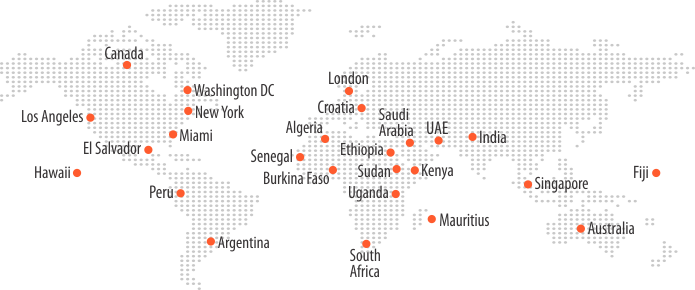Telecom Billing and Revenue Management – Why Does it Matter?

The rising number of subscribers and the emergence of multi-play services have led to stiff competition in the telecom industry. As a result, Telecom operators must deploy innovative revenue management solutions that support accurate billing, rating, routing, and roaming processes to stay ahead of the game. For example, the best roaming solutions would process and distribute roaming CDRs for operators to settle roaming traffic accurately on time, keeping customers happy and retained.
The new requirements for today’s billing solutions have become exceedingly large because of the bundled offerings from international calling solutions, types of subscribers, lines of business, and various payment methods. According to a survey, the telecom revenue loss increased by 28% from 2019 to 2021, with an estimated loss of $39.89 billion in 2021. Thus, robust and AI-first revenue management and billing software are pivotal in identifying telecom revenue leakage and delivering sophisticated, high-quality customer service.
Let’s understand the importance of billing in telecom revenue management and its role in providing different innovative services.
Importance of Revenue Management System in Telecom
Telecom revenue management systems charge customers for products and services per the commercial agreement. Its primary function is to avoid revenue leakage by ensuring the integrity and accuracy of processes involved in revenue assurance, such as rating, invoicing, billing, and fraud management.
A revenue assurance solution following the eTOM (enhanced Telecom Operations Map) framework offers the following critical capabilities for an end-to-end billing chain:
- Charge creation according to subscription, usage, rating, interconnect billing, roaming, and mediation
- Validation of sold services and products with what is delivered to the customer
- Payments, inquiries, and dispute settlement
- Collections and accounts database
- Automatic file exchange and reporting capabilities for a 360-degree view of roaming services
- Evaluating potential revenue leakage with inconsistent gaps and trends analysis
- Data for upselling and cross-selling strategies
Revenue management systems help telecom operators secure profits by monitoring and plugging revenue leakages in the existing processes. In addition, a scalable system backed by new technologies ensures companies can constantly innovate and launch new offerings. It is also crucial to integrate multiple BSS (Business Support Systems) and OSS (Operations Support Systems) in cases of telecom mergers and acquisitions.
How Telecom Billing Solutions Help CSPs Assure Revenue?
A telecom billing solution comprises all the policies, processes, and data using which service providers can calculate how much their customers owe them. Each operator has different formulas and tactics for calculating rates, labeling rates, and naming fees. For instance, a VoIP provider that offers international calling solutions only for corporate travelers will undoubtedly have a unique billing mechanism.
Besides, roaming solutions require a separate workflow that deals with rating, roaming settlement, error handling, and accurate charging. International roaming providers use TAP (Transferred Account Procedure) files to exchange roaming usage information with partner carriers. In case of disputes and errors, the roaming partner would generate a RAP (Returned Accounts Procedure) file comprising event detail records with errors and send it to the roaming provider for corrections.
Telecom billing software relies on an integrated charging platform called Online Charging System (OCS) that charges customers in real-time for every transaction. The OCS tracks and records all the details of a device’s interaction with the telecom network. It then converts call and usage data into a monetary equivalent for invoicing the customer. Billing solutions also manage tariffs, disputes, settlements, discounts, and payment processing.
Below are different ways advanced billing software helps communication service providers assure revenue:
- Accuracy: The automated billing processes ensure compliance with government and regulatory policies. Process intelligence makes it easy to validate plans, schemes, and discounts for a more extensive base of subscribers.
- Reporting and analysis: Detailed reports on inconsistency gaps and errors in billing are automatically sent to concerned departments.
- Accountability: The software increases accountability by identifying bottlenecks through metadata.
- Revenue leakage mitigation: It evaluates revenue leakage potential for each source and identifies unusual traffic patterns to trigger block actions and fraud alarms for faster corrective action.
- Reduced churn: Data analytics functions are leveraged to predict and define churn to develop unique plans to target customers porting out of the network.
Three Common Types of Telecom Billing Cycle
Prepaid Billing
Subscribers must pay for their services in advance to use them. Then, instead of invoices, the customer account is charged in real-time based on predetermined units and the remaining credit amount declines on the go.
Postpaid Billing
Postpaid billing is a conventional telecom billing option that allows subscribers to consume services without paying in advance. Instead, consumers are billed at the end of every billing cycle.
Convergent Billing for Multi-play and Corporate Offerings
Convergent billing allows operators to merge prepaid, postpaid, retail, and wholesale services into triple-play, quad-play, bundled, or tiered offerings. It includes all service charges into a single invoice that provides companies and individual clients with a unified view of billing over the predetermined cycle.
Key Features and Functionalities of Telecom Billing Software
Telecom billing software must comprise a comprehensive set of executive dashboards and fraud control features to support international calling and roaming solutions. From TAP/RAP file processing to real-time view of roaming activities to error reporting, a billing software does everything that enables a range of specialty and pay-as-you-go plans for calling, roaming, and other facilities.
Product/Service Rating & Pricing Algorithms
- Product portfolio management: It manages predetermined rates per unit for international calling solutions, data, and SMS packages, including sub-charges and taxes, according to the country’s tariff system.
- Convergent product portfolio: It stores pricing and rates for various inventory and handset-based products, bundles, and multi-play offerings.
- Discounts and promotion: This component handles discounting based on the sales team’s promotional strategies, e.g., upsell, cross-service, a particular period, and introductory discount.
- Telecom Mediation: It allows the conversion of call data to predetermined file formats operators can export to a specific billing system or other OSS application.
Billing Inquiries, Disputes & Adjustments
- Credit control and dunning: It involves service group-based credit control and automatic dispatch of dunning notices based on time and value.
- Dispute settlement: It responds to discrepancy queries on mischarges and billing errors.
Billing Account & Collection Management
- Customer lifecycle management: It keeps track of all the information about a subscription profile, from customers’ financial transaction history to their preferences.
- Corporate customer profile: It allows for managing dynamic product catalog, corporate contracts, accounts, and sub-accounts hierarchy.
- Tax management: It helps operators determine and bill as per the country’s latest taxes and sub-charges rules.
Put a Complete Suite of Billing Features to Work and Innovate Your Offerings
Telecom revenue management is becoming increasingly complex with the onset of complementary technologies, bundles, and tiered offerings. Struggling to stay upright under the pressure of staying ahead of the competition can lead to revenue loss because of a lack of focus on security and fraud. Thus, communication service providers must expand their products and services portfolio with carrier-grade, convergent billing solutions to retain profitability and market share.
Bankai Group utilizes end-to-end billing and revenue management systems to provide the best roaming solutions from CallnRoam that help you be in touch with friends, family, and business associates while traveling.
Related Posts
5 Trendsetters: The 2023 Outlook for Telecom Industry
The Future of Wholesale Telecom Beyond Imagination!






